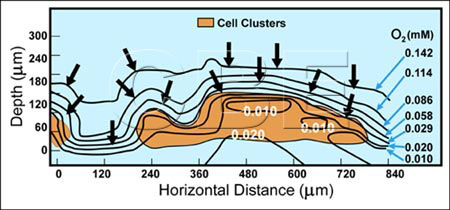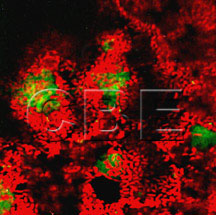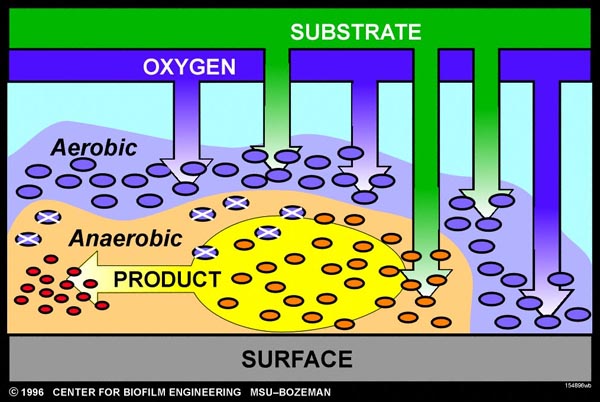Biofilm strategies: Gradients and niches

Oxygen contours measured with a microelectrode show oxygen penetrating the channels (open areas) around the biofilm microcolonies (brown) visualized by CSLM. The anaerobic (oxygen depleted) areas occurred in the center of the microcolonies, not at the base of the biofilm as was expected when biofilms were generally assumed to be flat layers.Courtesy, P. Stoodley, D. deBeer, Z. Lewandowski & F. Roe.

Above, a Confocal Scanning Laser Microscope (CSLM) image showing the spatial relationship
between Klebsiella pneumoniae (green) and Pseudomonas aeruginosa (red) in a biofilm.
Courtesy, S. Handran & A. Camper
Practical Implications
Since natural biofilms are comprised of many different species of microbes—hundreds
have been identified co-existing in oral biofilms, for instance—researchers have to
learn more about the microbial ecology of a particular system in order to develop
effective solutions to biofilm problems.
Schematic of a how the variety of gradients in a biofilm can create micro-niches that affect the constituents and the community structure of a biofilm. Biofilms often provide living conditions suitable to different types of microbes. Where oxygen can diffuse into the biofilm, aerobes predominate. At depths where oxygen is limited or absent, anaerobic populations thrive. Some microbial populations consume the waste products of others, and so are found in close proximity with the waste producers. Nutrient limitation in the interior of a biofilm microcolony can force the microorganisms into a slow-growing or non-growing state. It is well known that starved bacteria can be much less susceptible to a variety of antimicrobial challenges.

